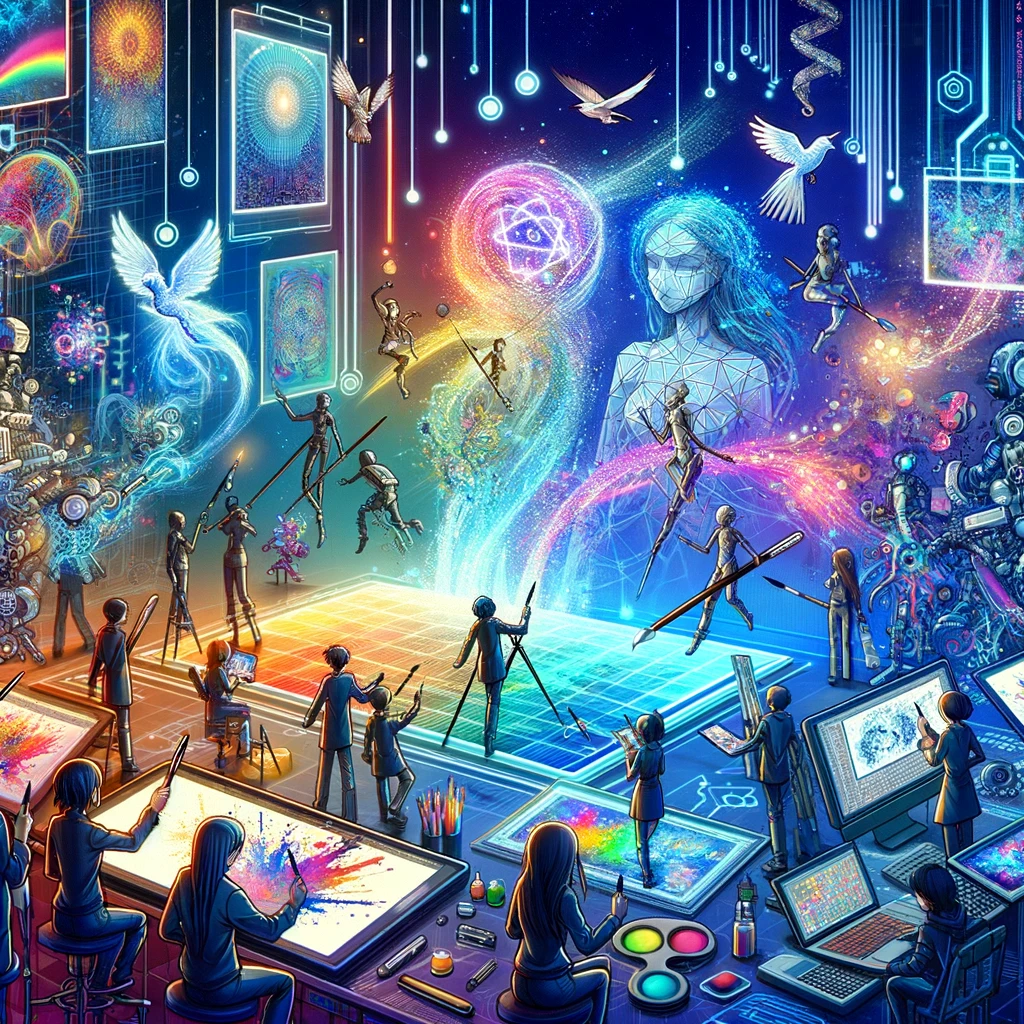The Emergence of AI in Art
Artificial intelligence in art refers to the use of machine learning algorithms and neural networks to create or interpret art. These technologies enable machines to analyze vast amounts of data, learn from it, and generate outputs that are, in many cases, indistinguishable from works created by human hands. This convergence of technology and creativity has given birth to a new realm of digital art, marked by its innovative approaches and the ability to transcend traditional artistic limitations.
One of the earliest and most iconic examples of AI in art is the creation of artworks using deep learning techniques, such as Generative Adversarial Networks (GANs). These networks can generate images, music, and even textual content that reflect learned artistic styles or entirely new aesthetics. As a result, artists and technologists alike are exploring AI as a tool to expand their creative expression, producing works that challenge our perceptions and engage audiences in novel ways.
Transforming Creative Processes
AI’s impact on art is not limited to the creation of new works; it is also transforming the creative process itself. Artists are now using AI as a collaborative partner, leveraging its capabilities to explore new ideas and push the boundaries of what is possible. This partnership can manifest in various forms, from AI algorithms suggesting modifications to a piece to entirely AI-generated compositions based on an artist’s initial input.
Moreover, AI tools are democratizing art creation, making it more accessible to people without formal training. Through intuitive interfaces and AI-driven platforms, individuals can create complex and sophisticated artworks, opening up the world of artistic expression to a broader audience. This accessibility is fostering a more inclusive artistic community, where diverse voices and visions can be shared and celebrated.
Ethical and Aesthetic Considerations
The rise of AI in art raises significant ethical and aesthetic questions. One of the most debated issues is the concept of authorship and originality in AI-generated art. When an artwork is produced by an algorithm, who is the true creator? This question challenges traditional notions of artistic ownership and copyright, prompting a reevaluation of legal frameworks and ethical guidelines in the art world.
Furthermore, the aesthetics of AI-generated art are prompting discussions about the role of human emotion and experience in the creative process. Can a machine truly capture the depth and nuance of human emotion? While AI can mimic styles and generate compelling compositions, the subjective and experiential aspects of art remain uniquely human. This tension between technology and humanity is at the heart of the dialogue surrounding AI art, pushing us to reconsider our understanding of creativity and expression.
The Future of Digital Creativity
Looking ahead, the future of digital creativity shaped by AI is both promising and uncertain. Advances in machine learning and computational creativity are likely to lead to even more sophisticated and autonomous forms of artistic expression. We may see AI systems that can not only replicate existing styles but also innovate new genres and mediums of art, challenging our expectations and expanding the horizons of creative possibility.
Furthermore, the integration of AI with emerging technologies such as virtual reality (VR) and augmented reality (AR) could revolutionize the way we experience art. Immersive and interactive art experiences, powered by AI, have the potential to create deeply personalized and dynamic forms of expression, blurring the lines between creator, artwork, and audience.
However, this future also demands careful consideration of the ethical implications of AI in art. Issues of bias, privacy, and the digital divide must be addressed to ensure that the evolution of digital creativity is inclusive and equitable. Moreover, maintaining a balance between technological innovation and human touch will be crucial in preserving the essence and impact of art.
Conclusion
The revolution of art by AI is a testament to the incredible potential of technology to enhance and expand human creativity. As we stand at the crossroads of this exciting evolution, it is clear that the future of digital creativity will be shaped by our willingness to embrace the unknown, challenge our assumptions, and engage in thoughtful dialogue about the role of technology in artistic expression. The journey of AI in art is just beginning, and its trajectory promises to be as unpredictable as it is exhilarating, signaling a new era where the boundaries of creativity are continually reimagined.
